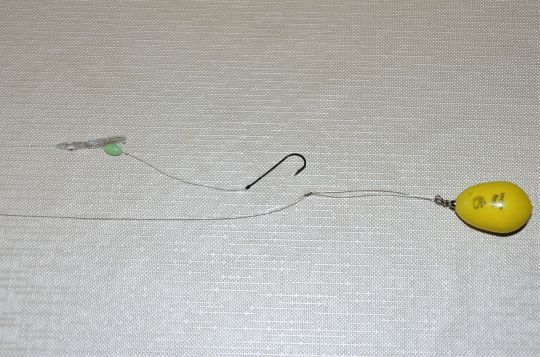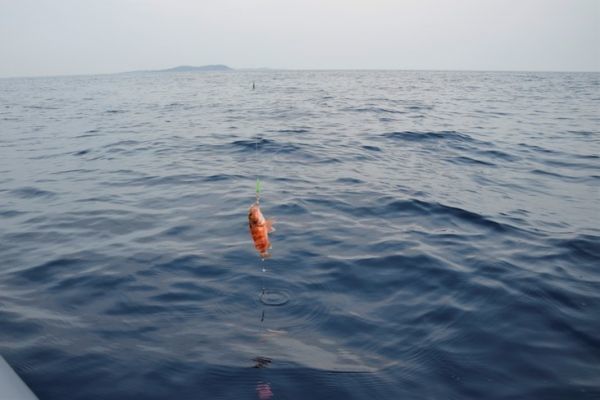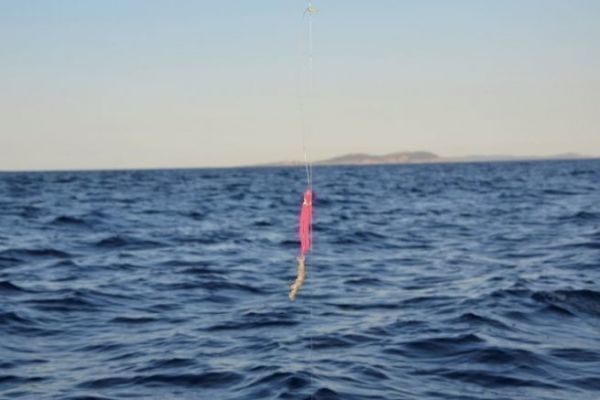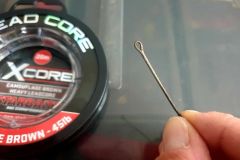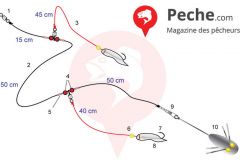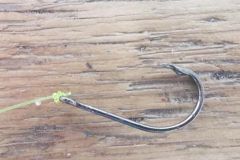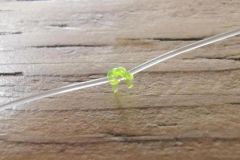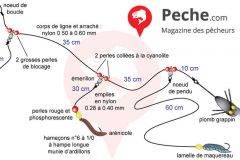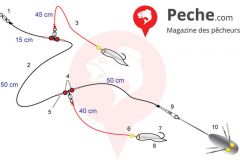Presentation of the rig for deep longline fishing
The pater noster is a type of rolling swivel in the shape of a letter "T" and therefore has three attachments for the line. The rolling swivel allows the swivel to turn relatively freely in the water to avoid tangling on the line body.
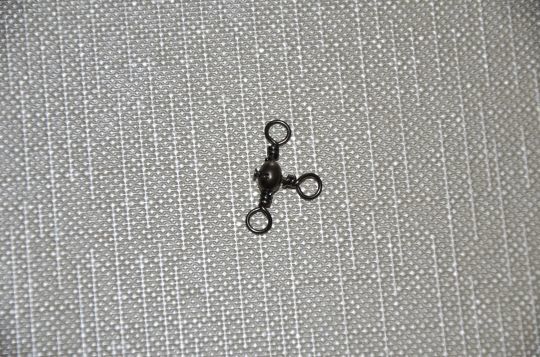
The number of leaders depends on the technique you use and the depth of water you wish to cover with your rig. The greater the number of leaders, the greater the layer of water to be fished. As a general rule, use two to three leaders to fish close to the bottom for rock fish, and up to six if you want to catch schooling fish, such as red bream.
Why choose pater noster mounting?
The pater noster rig is the first rig you learn to make when you start fishing this way. It doesn't require a great deal of rig-building experience, as all you need to do is tie simple knots to connect the leader and line body to the pater noster.
It's also a fast rig that can be set up on the water to suit fishing conditions. The rigidity of the pater noster also reduces the impact of length errors on the leaders and avoids frequent tangling.
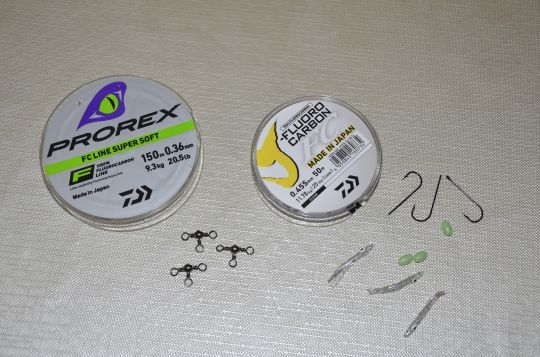
How to make it?
Here's how to make a "rockfish fishing" rig with pater noster, with three hooks. To do this, you'll need :
- Several meters of 45-centimeter nylon or fluorocarbon for the line body
- Approximately 2 meters of fluorocarbon in 36 hundredths for the leaders
- 3 pater noster
- 3 hooks
- Glow-in-the-dark beads
- Glow-in-the-dark octopus if you wish to add some.
Please note that the lengths given for the rig are examples only. Each rig must be adapted to the type of fishing you intend to do.
Connect two pater noster with 45-centimeter nylon, spacing them about 80 cm apart.
Then connect a third pater noster with the same diameter and distance.
Make a loop on the 45° and connect the other end to one of the two pater noster about 60 cm apart.
Repeat the previous step on the other pater noster.
Using 36-centimetre fluorocarbon, make the knots for the 3 hooks, keeping at least 50 cm of wire.

Thread the beads and octopus onto your fluorocarbon, then connect them to the last branch of the pater noster.
Check that the rods cannot catch on each other.
All that's left is to tie a small figure-of-8 knot to secure the pearl and octopus to each snood.
